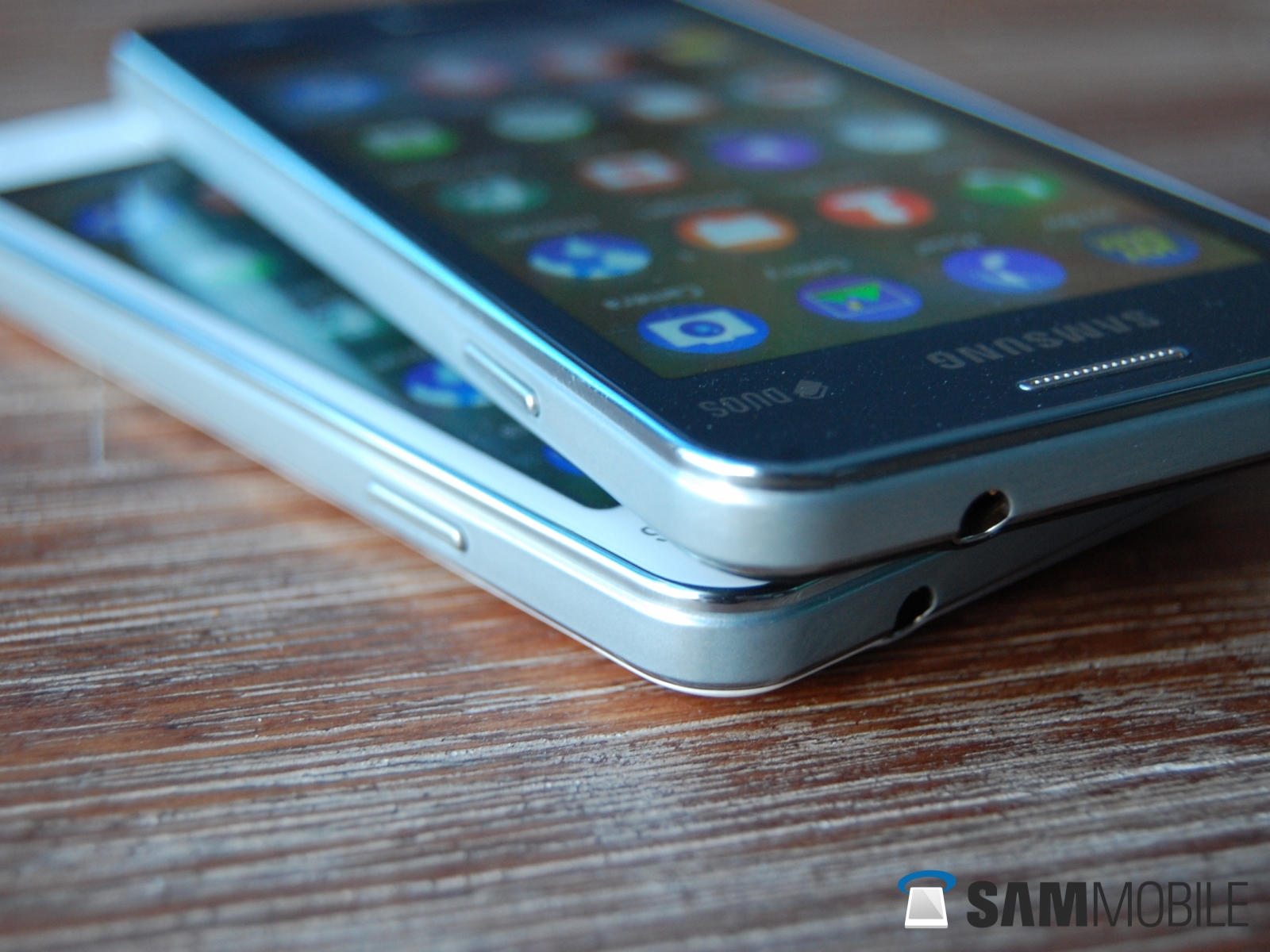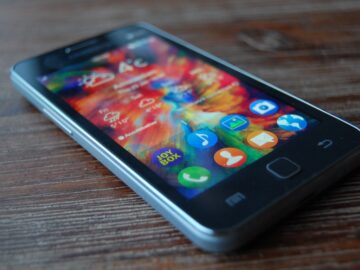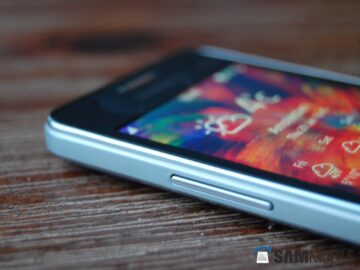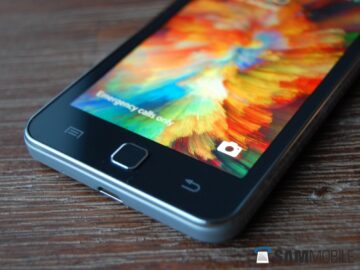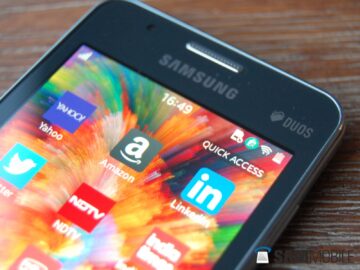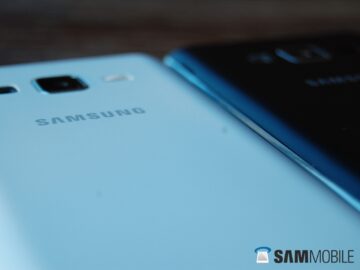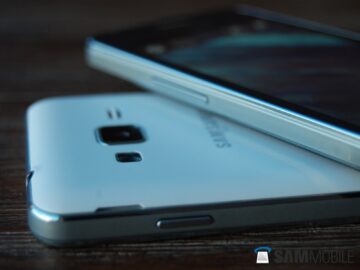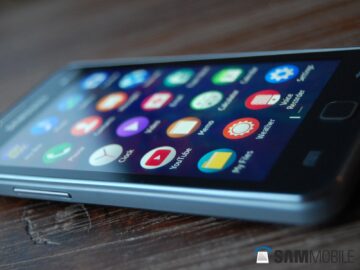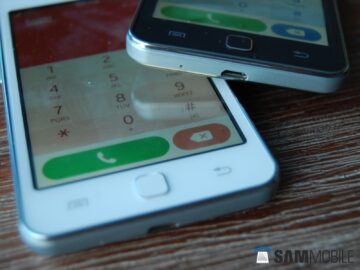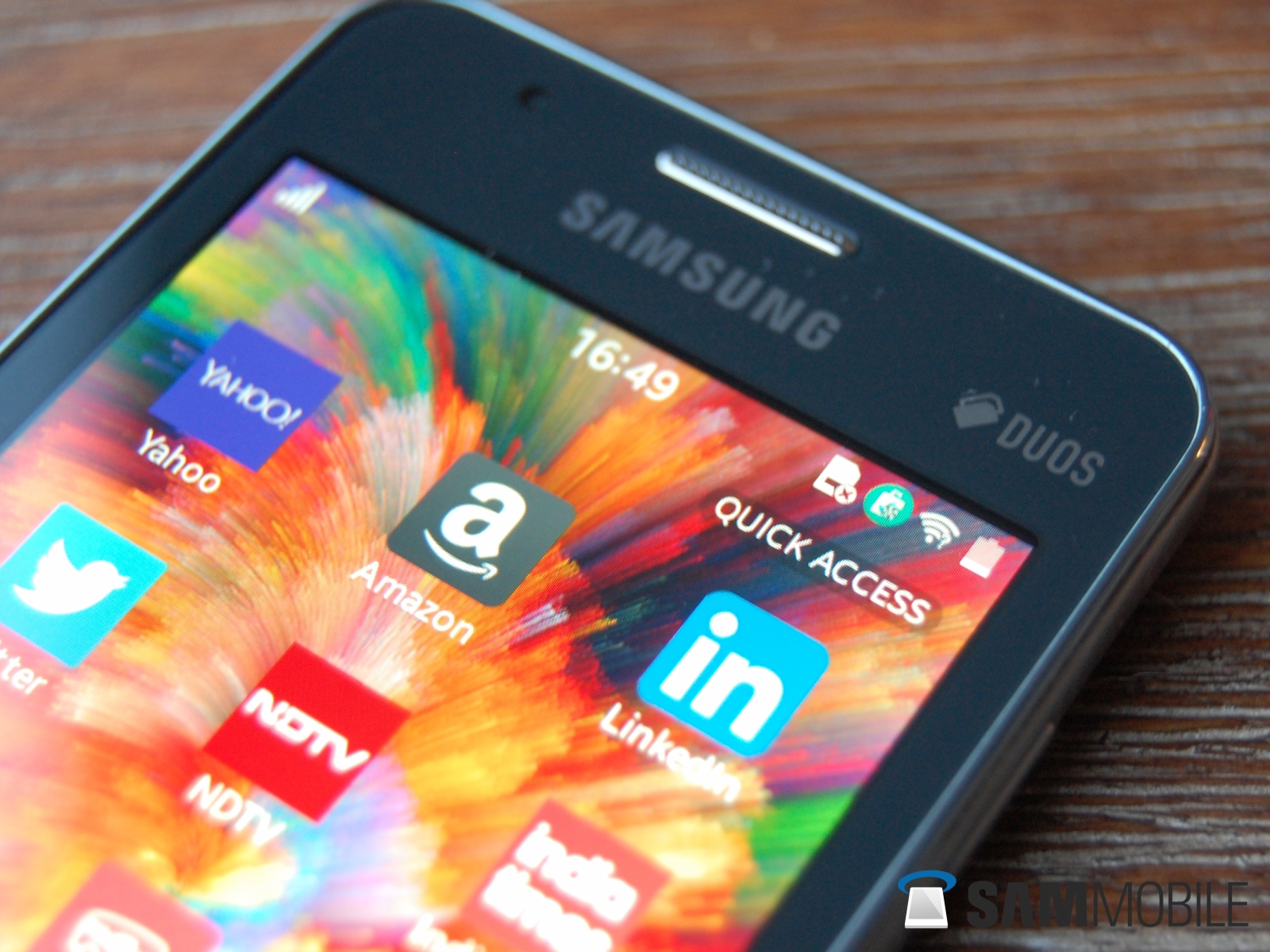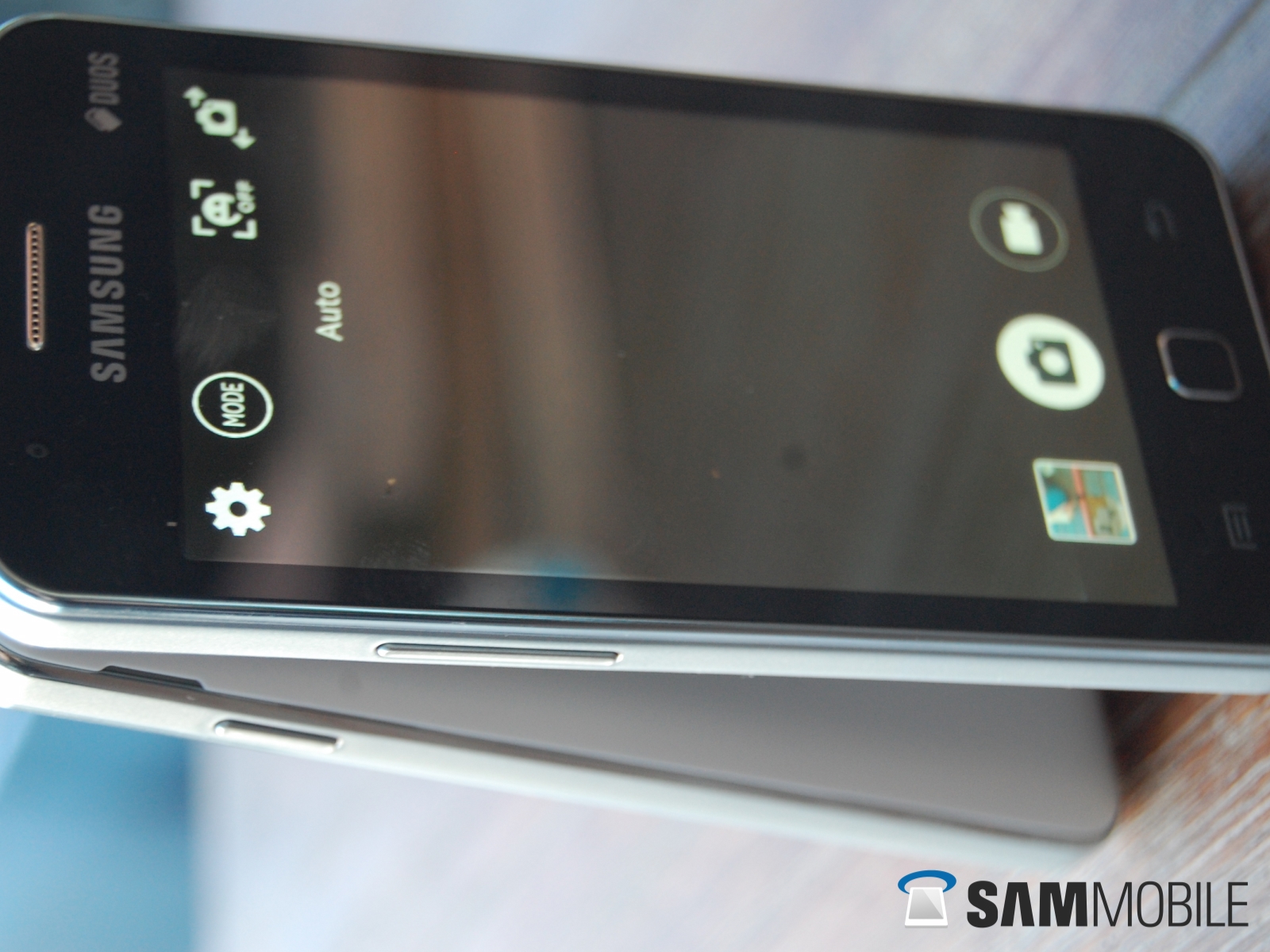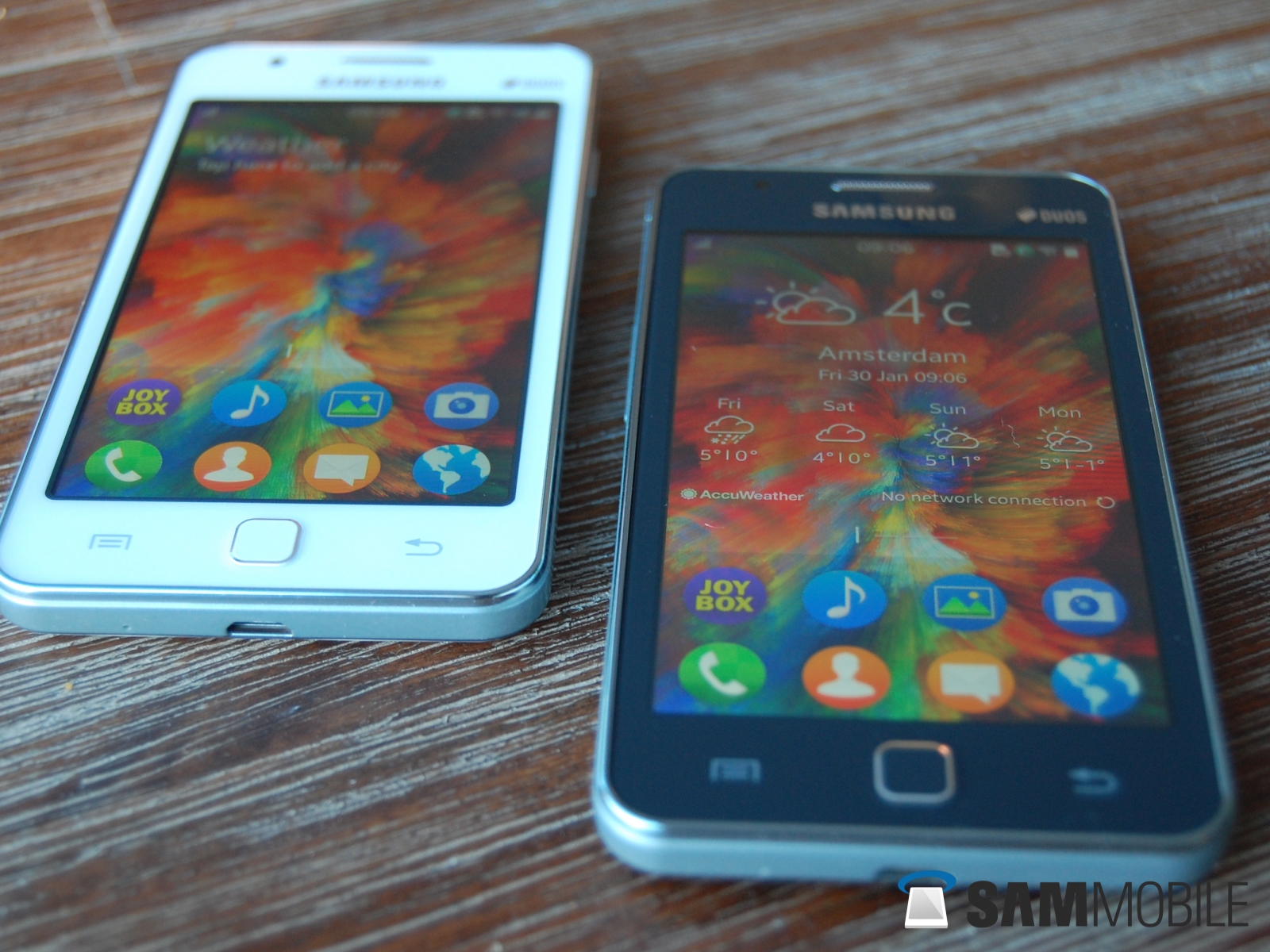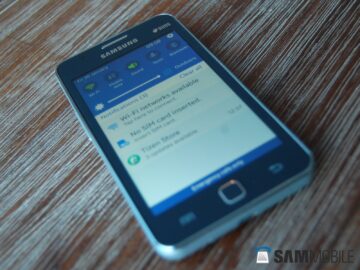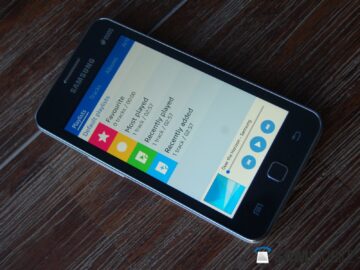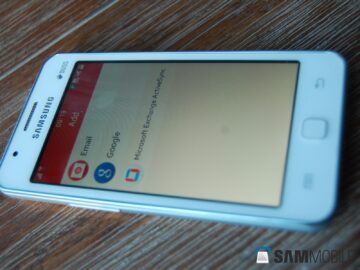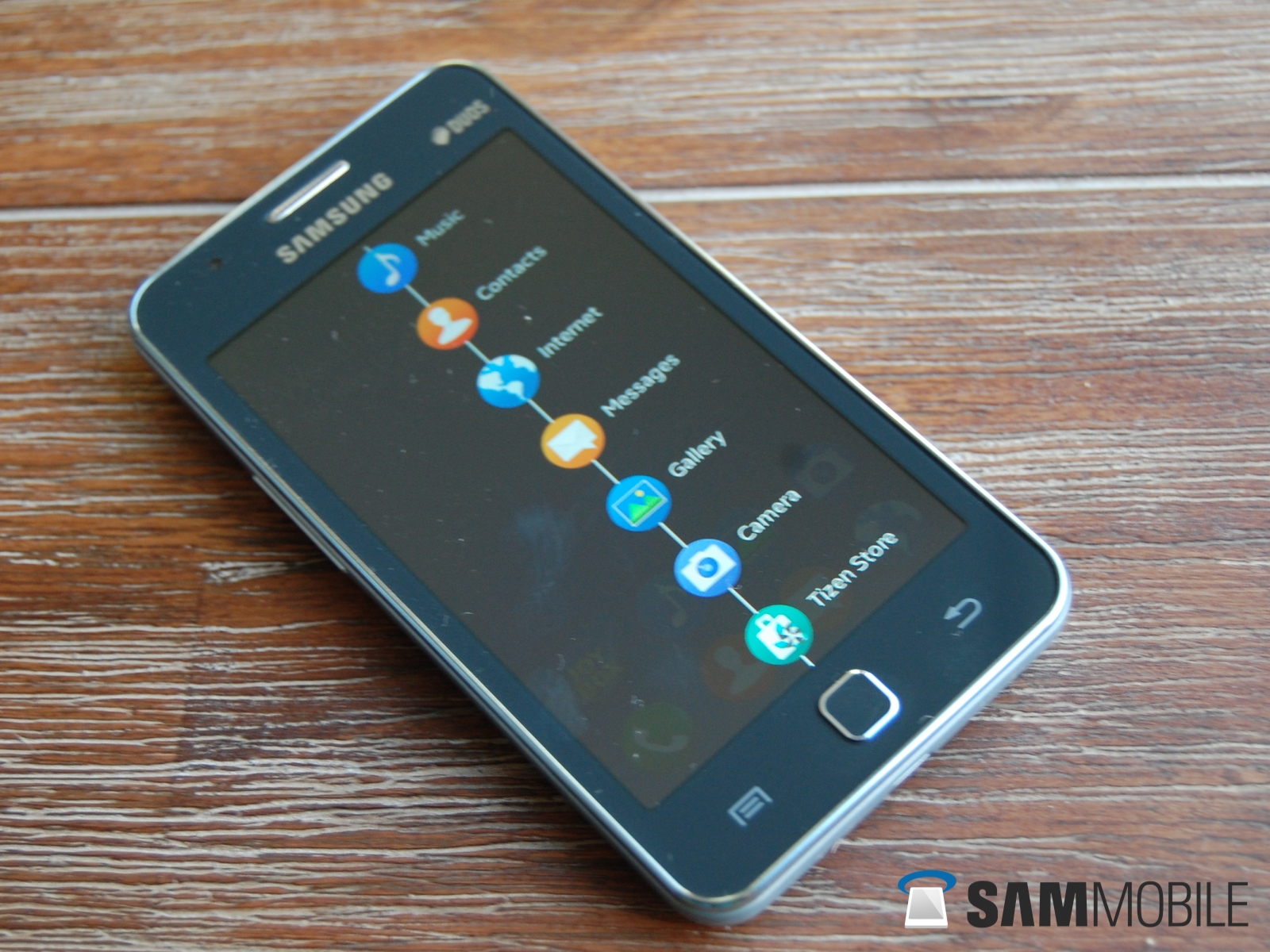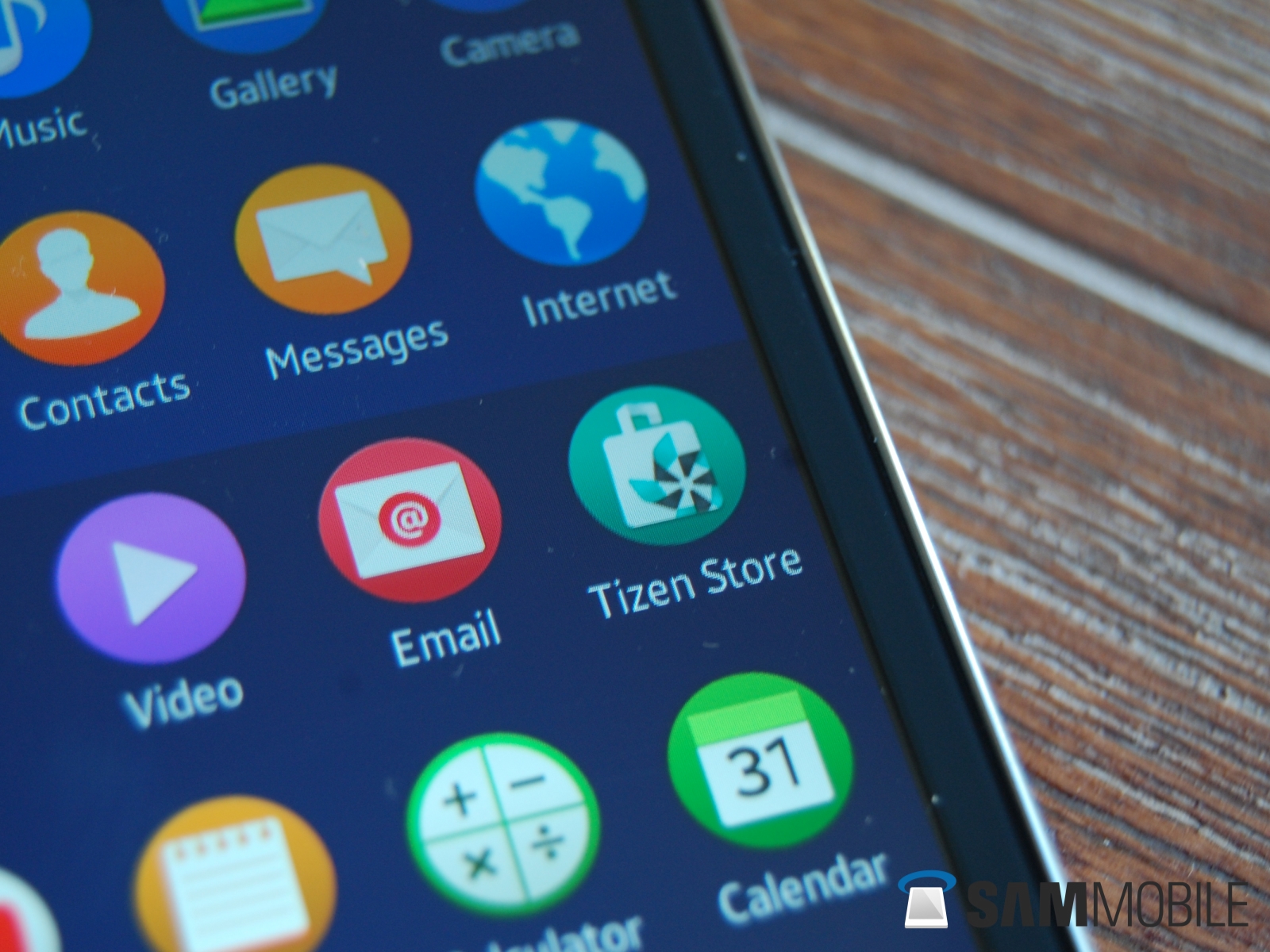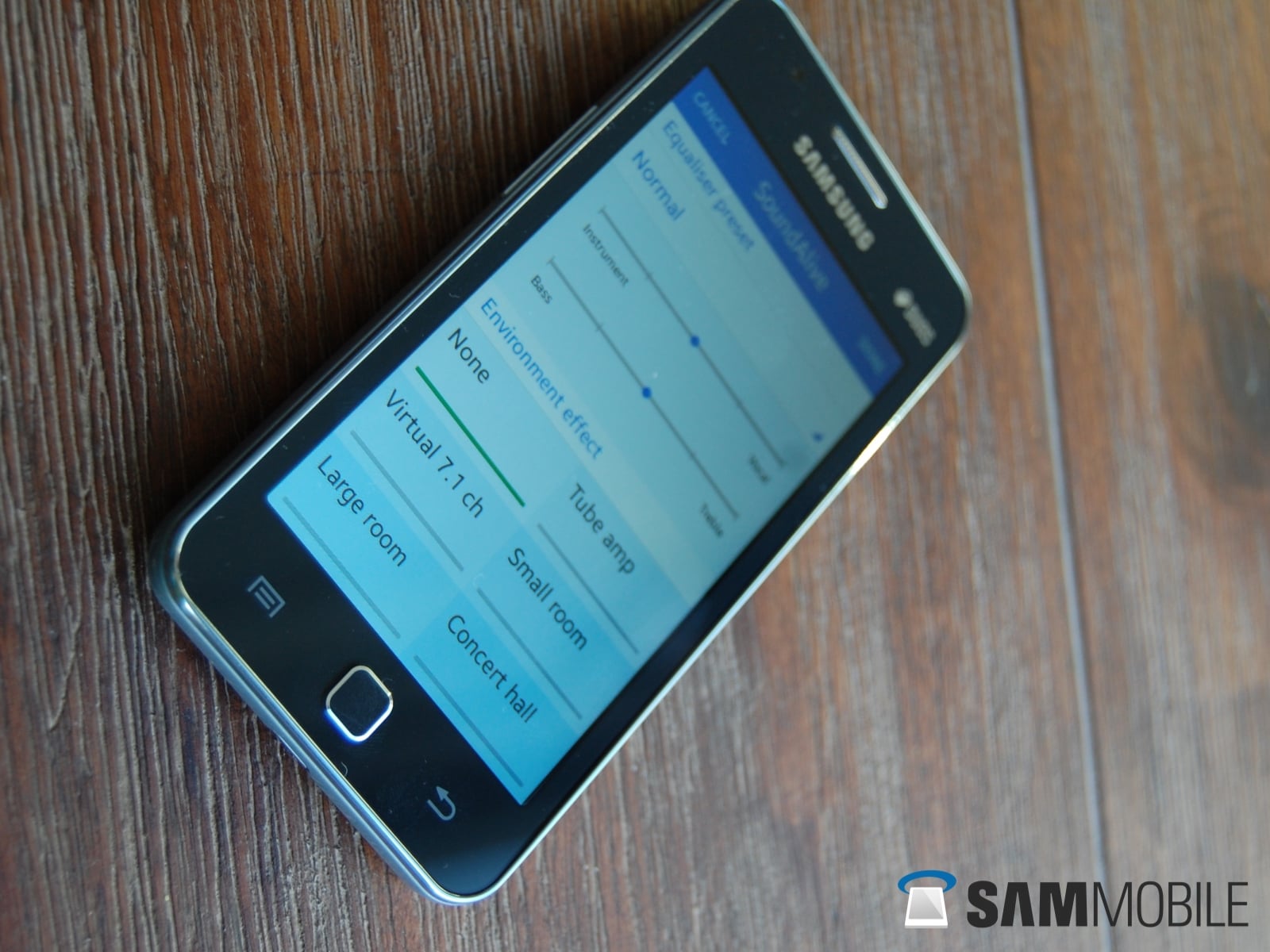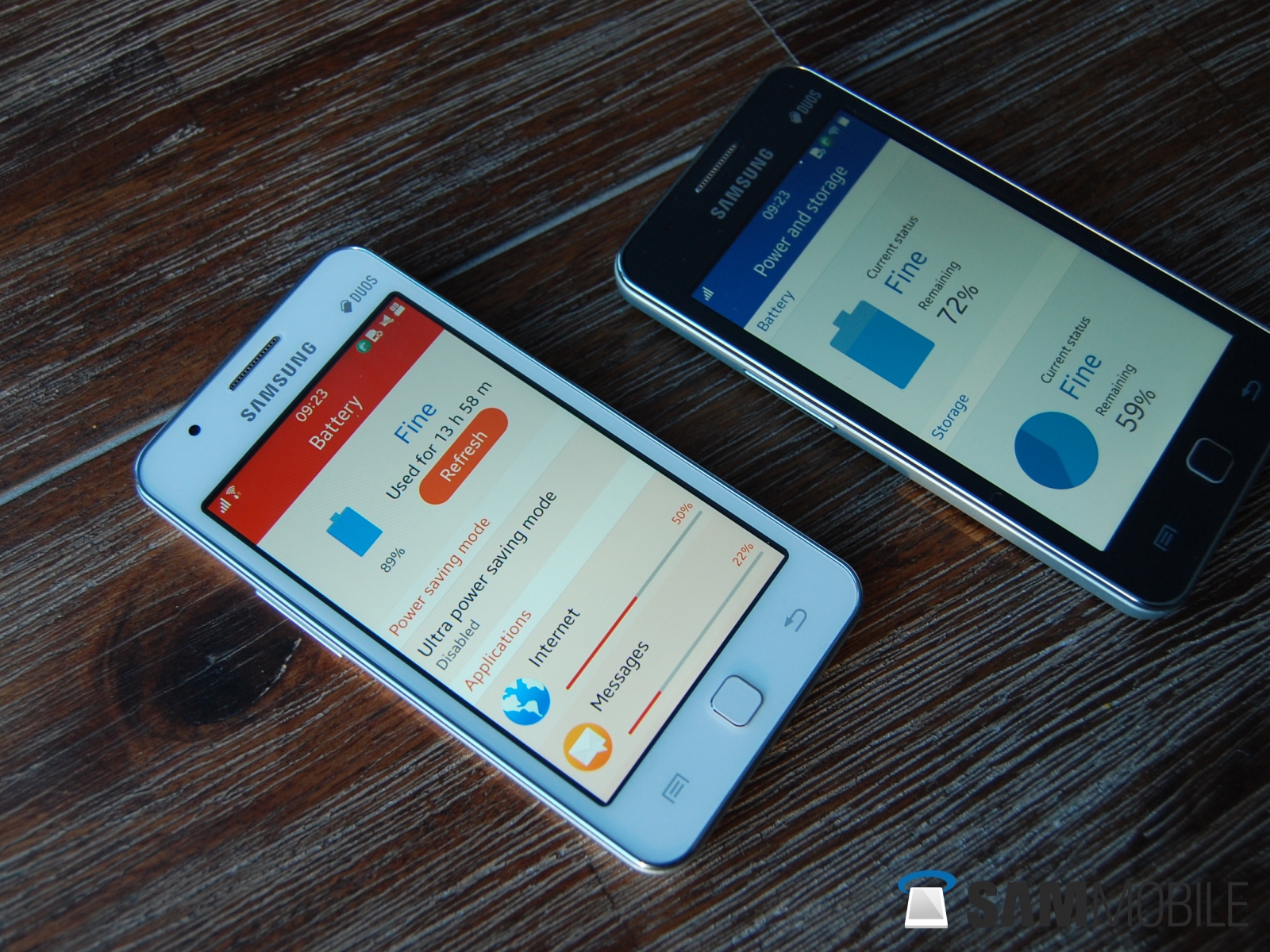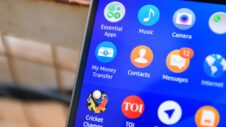Samsung has been working on Tizen for a long time, in order to break away from its dependence on Android and have its own ecosystem that it can offer across a range of products, including smartphones, TVs, cars and more. After numerous delays, the Korean manufacturer finally managed to launch a phone running Tizen in the market. This phone is the Samsung Z1, which went on sale in India earlier this month. Unlike what was earlier expected, Samsung decided to debut Tizen on a budget smartphone – at $90 (INR 5,700), it's a considerably low-cost phone that breaks away from the usual norm and offers better hardware than existing smartphones from the company.
But the phone itself is not the star here. It's Tizen, an operating system many thought was almost becoming vaporware thanks to the delays. We have been using the Samsung Z1 for a week or so, and here's what we think about the spearheader of Samsung's ambitious OS.
Design
As we said in our hands-on preview, the Z1 looks a lot like Samsung's low-end Android phones, thanks to the overall shape and the placement of navigation buttons. It's a rectangular slab with an unassuming design. At the front, you have the Samsung and DUOS logos above the display, along with the speaker grille and front-facing camera. Below the display, there's a menu button, followed by a small physical home button, and a back key. The home button is oddly shaped: it's a square instead of the rectangular home button we see on Samsung's Android phones, making it a bit too tiny sometimes when you're using the phone.
At the back, there's the 3.1-megapixel camera sensor in the middle, with an LED flash on its left and the loudspeaker grille on its right, and another Samsung logo. The volume buttons are placed on the left of the phone, the power button is on the right, and the 3.5mm headphone jack and microUSB port are placed at the top and bottom of the phone respectively.
The Z1 is made entirely out of plastic, but the overall feel of the device is rather impressive given its price. The phone feels sturdy; the soft removable plastic cover on the back doesn't feel cheap and offers a good grip (though since the phone isn't too big, the ergonomics are already better even without the grippy back cover.) The tick-tick sound when you press the volume and power buttons does give away the fact that this is a low-cost device, but overall, the Z1 feels pretty good to use and hold in hand.
Display
The display is usually the first thing one notices after turning on a smartphone, and the Z1 thankfully doesn't disappoint despite the low price tag. While the display isn't too sharp given its rather standard WVGA resolution, it does get rather bright. There's no auto brightness mode here, but for those moments when you have to use it out in the sun, you can enable the ‘Outdoors' mode from the notification shade to further enhance brightness levels.
The result is a display that is fully readable no matter how bright the sun might be shining from above; it's easily readable even when you don't enable Outdoors mode. Viewing angles are great as well, with very little color shift no matter from which side you're looking at it. Colors are, for the most part, well above average in terms of contrast, though they aren't going to impress anyone at the end of the day.
The only noticeable issue with the display is that it's a fingerprint magnet. Just putting one finger on the display after properly cleaning the glass results in a visible fingerprint, which is odd given the back of the phone is rather resistant to visible smudges even on the black model (not that it's fully black on the back, but it's enough to hide smudges in most cases.)
Camera
Imaging is where the budget nature of the Z1 really shines through, with the phone featuring a 3.1-megapixel fixed-focus camera on the back and a VGA shooter on the front. The rear camera takes decent images for a 3MP sensor – there's not much in the way of detail, but in good lighting, I guess you could say the images aren't that bad. Zooming in on pictures reveals some noise; also, considering it's a fixed-focus camera, macro shots of close-up subjects are out of the question.
The VGA shooter on the front is, um, pretty bad, with very less detail in pictures and a lot of red noise in some cases. The Z1 is aimed at first time smartphone buyers, but I'm pretty sure those moving on from a feature phone won't be very impressed considering these cameras aren't any better than what you would find on many feature phones out there. Video recording is also average, though videos are free of stutter or hiccups for the most part.
As for the camera app, its interface is similar to what you see on new Galaxy devices. At any given time, there's a shutter, settings, mode and video recording button on the screen, making it cluttered for the small screen size. You get two shooting modes in addition to the standard one: Panorama and Dream Shot. There's also the Rear Cam Selfie mode that was introduced by Samsung in the Galaxy Note 4, which takes a photo two seconds after it detects a face. Over in the settings menu, you can change the photo and video resolutions, white balance, enable location tag, set the storage location, and decide what the volume key does when it is pressed.
Overall, the camera experience leaves much to be desired and is one of the things that took a hit because of the price. Check out a few photos taken by the Z1 and a video sample below.
Software
Tizen. That's all the Samsung Z1 is about, being the first phone to hit the market running on the Korean manufacturer's own mobile OS, so our software section of the review will be a bit longer than what you usually see in our reviews of Samsung's Android devices.
Like the Z1's design, Tizen doesn't look too different from Samsung's Android software when you wake up the phone and look at the lockscreen. The lockscreen shows the time at the top and has a camera button on the bottom right, similar to TouchWiz, but once you go ahead and unlock it, you will enter a noticeably different world.
Like Android, Tizen is based around a home screen that you can access shortcuts and widgets from. There's a dock at the bottom that shows eight app icons at all times (unlike 4 or 5 on an Android device), and bringing up the app drawer is done by swiping up from this dock. You can add multiple homescreens and fill them up with widgets – the phone comes pre-loaded with widgets for the calendar, contacts, FM radio, alarm, gallery, internet, music, weather and world clock.
Another common feature Tizen shares with Android is the status bar, though the order of the status bar icons is reversed, so you have notification icons on the right corner, network and connectivity icons on the left, and the time at the center. The status bar can be dragged down to access the notification panel. Here, you have a row of toggles for things like Wi-Fi, Bluetooth and Ultra Power Saving Mode (you can't customize these toggles) at the top, a brightness control slider below the toggles, and then the notifications area.
Notifications can be clicked on to go to the respective app and cleared by swiping from left to right. Notifications can't be expanded, but I'm sure that feature will make its way to Tizen in a future iteration of the OS. There is a nice aspect of the notifications though – restarting the phone doesn't clear away the notifications, so the notifications stay unless you clear them on your own.
When you turn on the phone for the first time, you can add a Samsung account, then proceed to signing in to your email and Dropbox accounts. Tizen supports signing in to a Google or Microsoft mail account and syncing with your contacts and calendar data, and you can also sync these with your Samsung account. Signing in to a Dropbox account will fetch you 48GB of free storage for a year.
For an OS that is so new, Tizen is surprisingly feature-packed (well, maybe not that surprising considering how long Tizen has been under development). You have features like Wi-Fi, Bluetooth and USB tethering, an option to change the theme for both the interface's colors and the system app icons, and even the Ultra Power Saving Mode that we've seen on numerous Samsung devices in the last year. There's also an option to set a default keyboard, though there are currently no third-party keyboard apps available on the Tizen app store at the time of this review.
Advanced users will be glad to know that the Z1 (and hence Tizen) supports proper multitasking. Switching between apps can be done from the task switcher, and the OS supports background services like Android for apps that need to always remain active in the background. Tizen seems to be rather light on memory usage, as I was able to switch between multiple apps without anything of them restarting.
One aspect of Tizen that I found to be rather old-fashioned was the lack of a soft menu button in apps, leaving the capacitive menu button the only option to access advanced options inside an app. For example, when viewing a picture in the gallery, you will need to press the menu button to get options like delete and share. There is no indication offered that the menu button needs to be pressed; this might not irk first time smartphone consumers moving on from a feature phone, but for anyone used to the Android way of doing things, this feels like a very odd and outdated method of doing things.
Apps/App Store
The Tizen Store is where users will be able to download third-party apps. The number of apps available for an OS is the deciding factor for its success in this day and age, and Tizen has a surprising number of native apps available from the get to. There are quite a few native apps, with many focused on the Indian consumer – there's a native app for The Times of India, PayTM (a service that lets users recharge their network and carrier subscriptions), TrueCaller, and a few other popular services. There's also the Minion Rush runner game from Gameloft, suggesting Samsung has gotten quite a few developers on-board for making apps for its young OS.
WhatsApp is available as well, but it is actually the Android app that runs through the OpenACL emulation app. The good thing about Tizen is that both WhatsApp and OpenACL are available from the Tizen Store, so you don't have to sideload Android apps to be able to run them on the phone. These apps do need to add support for OpenACL, but once that is done, you can simply install them from the store and run them like native apps.
However, there's a clear lack of popular apps on the Z1. The phone comes with apps for Facebook, YouTube and others, but all of these are basically their web versions wrapped in a native app. It's not really Samsung's fault that there are very few popular titles on Tizen, but it remains to be seen if third-party developers – especially big names like Facebook – will ever see Tizen as a viable platform that they should make apps for.
What makes matters worse is that Samsung is focusing on the low-end with Tizen, which would certainly push those developers away that are looking at making premium apps that aren't free. A lot of existing apps on the Tizen Store aren't free, and it just doesn't make sense investing money in an ecosystem that is unproven and may or may not become popular enough to attract developer attention.
Interface
Samsung's version of Android has never been deemed beautiful or modern, and on Tizen, the company hasn't done too much to change that outlook. Don't get me wrong: Tizen does look fairly good on the Z1, but when you compare it with other new OS like BlackBerry 10, Sailfish, or even Microsoft's Windows Phone, it becomes apparent good software design is still something Samsung needs to learn. App icons look rather cartoon-ish; there's nothing that hurts the eye though, so Samsung has certainly not taken a huge misstep, but Tizen could certainly have been so much more in terms of the interface and the visual experience.
Performance
Tizen is a new OS, meaning it's more lightweight than the established players (like Android and iOS) given its relative lack of features. Thanks to this, the overall performance of the Z1 is quite good. It's miles better than what Samsung's Android phones offer at this price range (or even at higher prices): apps open quickly enough and run smoothly. In fact, there is none of the scrolling jank that Android is so popular for in any of the apps that I used on the Z1. You do get the 1 or 2 second delay when opening things like the phone app or gallery app, but once they're open, things work pretty well.
In fact, it was quite good to see apps like the gallery and camera work without hitches and stutters, something we would kill to have on even high-end Samsung phones like the Galaxy Note 4. Installing apps seemed to take a lot of time, but once installed, there were little to no issues with performance. Minion Rush ran as smoothly as it would on a more powerful device, and zooming in and out in the pre-loaded Nokia HERE Maps app was very, very smooth.
Web browsing also works surprisingly well on the built-in browser. Web pages loaded quickly, scrolling through them was pretty smooth, and it handled most websites quite well. The phone did act up when I tried to scroll through a site before it had finished loading, but there were little to no issues when using the browser overall.
For a phone that costs only $90 (and one that runs software made entirely by Samsung), the Z1 is very responsive and smooth. Of course, you will always have the feeling you're using a low-end phone thanks to some hiccups during general operation, but as I said before, the user experience in terms of performance is considerably better than what is offered on low-end Galaxy phones running Android, making me wonder how good it will be on a device with high-end internals.
Note: You will notice we have no benchmarks to show in the performance section. This is partly because there are no benchmark apps available for Tizen, and partly because we have always maintained the opinion that benchmarks never tell the whole story and that real-world performance is what actually matters.
Sound
The loudspeaker on the Z1 is located on the back like almost all of Samsung's phone, and you get standard stereo earphones in the box. Sound through the loudspeaker is average. It's decently loud, but the sound itself feels hollow and doesn't have any punch. It's a similar story on other budget phones in the market, and you can just expect it to serve its purpose of notifying you about calls and other events and not much else.
When you plug in those earphones, the experience is slightly better but still not great, with sufficient bass and clarity. You do get a lot of options to tune the sound though. There are your standard equalizer presets, environmental effects; also present are sliders that let you set whether you want more bass or treble and select between hearing more of the vocals in a track or the instruments.
The music app is pretty standard fare, with everything categorized into playlists, albums, tracks, and artists. You can create your own playlists, and the app also has support for lyrics, making it pretty full-featured as far as the basics are concerned. 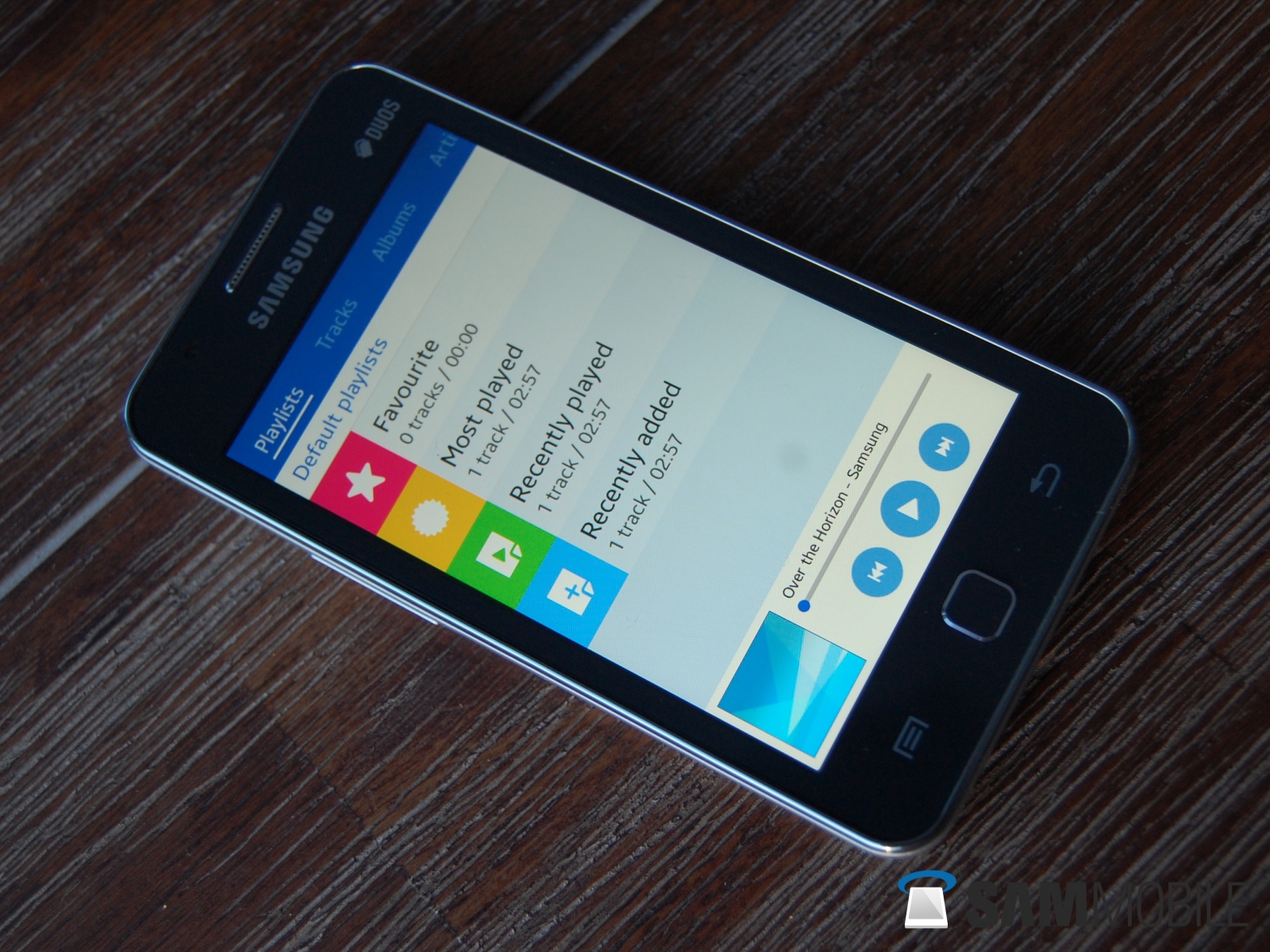
Battery Life and Call Quality
The Samsung Z1 features a 1,500mAh battery, and even for a low-end phone, that just isn't enough to instill confidence in its battery life. Samsung has touted Tizen has a lightweight OS that consumes less energy compared to other OS in the market, but in actual usage, battery life on the Z1 wasn't anything to write home about. It's not that the phone didn't last me until late evening, but using only a single SIM, I rarely managed to get to the next day with medium to heavy usage without a charge. Idle drain was erratic – I would lose 8 to 9 percent of charge overnight on some days, while on others it would barely drain around 2 percent.
Thankfully, Samsung has added the Ultra Power Saving Mode feature that we've seen on its Android phones. It works the same way: the phone limits usage to a few selected apps, turns off mobile data and other connectivity features when the screen turns off, and basically stops all background processes. Turning this mode on did help the phone heavily clamp down on battery drain, but Tizen certainly needs more optimization at this point if Samsung wants its claim of “longer battery life” to hold true against the competition.
Call quality was pretty good in my experience. I could hear the other person clearly, and the same was the case the other way around. Call volume was also sufficiently loud. In terms of reception, I had no issues, with the phone latching on to the network easily even in weak spots where the reception isn't usually great.
Conclusion
All things considered, the Z1 is a pretty good phone, at least when you compare it to the low-end devices that Samsung has released in the past. But is it better than the competition and worth spending your money on? Well, at least in the Indian market, the only market where the Z1 is available at the moment, it's not really a good proposition unless you really, really want to try out a new OS. The lack of apps is the biggest issue of course, and unless we see more high-end devices running Tizen come out, it will no doubt remain a problem for the foreseeable future.
Then there's also the fact that you have a lot of better choices if you're okay with Android, like Google's Android One phones or Xiaomi's Redmi 1S, all of which feature better hardware and come with the benefit of the huge Android ecosystem. Since most of these phones run on stock Android and/or faster customized versions of the OS than TouchWiz, the impressive performance of the Z1 isn't enough to warrant switching to a young ecosystem that may or may not grow. You also have Nokia/Microsoft's excellent Lumia phones, which are extremely smooth and offer a more visually appealing user experience (Windows Phone doesn't have a million apps, but it's still miles ahead of Tizen at the moment).
However, if you're looking for something different and aren't willing to spend too much cash in the procedure, or are looking for a secondary device, the Z1 is not that bad. Feature phone users will probably like the device if they decide to make it their first smartphone, but for anyone else, I don't think there is much sense in buying the Z1. There are better choices out there in the market, so Samsung is going to have to do a lot better if it wants consumers to buy into the Tizen ecosystem.

